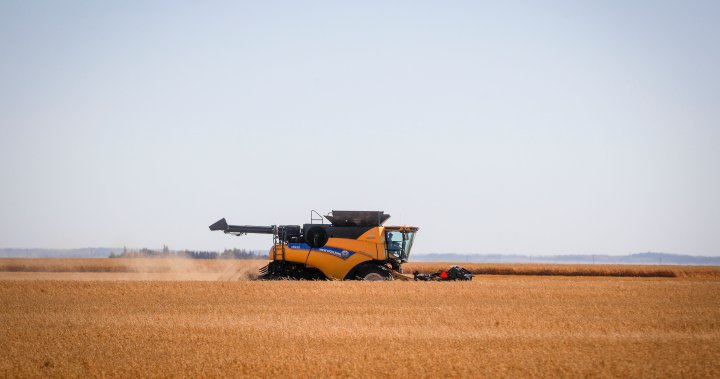Capital gains changes: Farmers say latest feds effort ‘doesn’t go far enough’ – National

Some Canadians farmers say the changes to a federal incentive are being touted as a way to reduce the impact of the capital gains The increase in the inclusion rate “does not go far enough” and they are calling on Ottawa to return the inclusion rate for farmers to what it was before this year’s change.
On Monday, the Finance Department provided more details on the Canada Entrepreneur Incentive (CEI), which, first announced in April, would cut the capital gains inclusion rate in half, to 33 per cent, up to a limit of $2 million, by its full rollout in 2034.
The new change brought that date forward to 2029, with incremental increases of $400,000 starting in 2025.
The incentive also only allowed founders of a company to be eligible, but this condition has now been removed and the requirement to hold 10% or more of the shares has been reduced to 5%.
Under the changes made by Ottawa, the inclusion rate for taxable capital gains has increased from 50% to 67% for individuals making more than $250,000 of such gains per year. However, the same increase will also apply to all such gains made by corporations and many trusts.
“It certainly doesn’t go far enough,” Kyle Larkin, executive director of the Grain Growers of Canada, told Global News. “It will benefit some farms in Canada, but most farmers will see no benefit from it and will still face a tax increase.”
While many farms in Canada are incorporated, the Grain Growers of Canada says that even if a farmer’s principal residence is not subject to capital gains tax when sold, he or she will still be subject to that 67% rate on any gains realized when selling farmland.
The email you need for the day
The top news from Canada and around the world.

Receive daily national news
Get the day’s top political, business and current affairs news delivered to your inbox once a day.
To give some perspective, grain producers calculates that an Alberta farm of approximately 2,500 acres purchased for $1,385,000 in 1996 could potentially sell for approximately $17,250,000 in 2023 for a pre-tax profit of $15,865,000.

“But that money doesn’t go directly to the farmers,” Larkin said. “They have debt to pay off, a lot of the equipment is leased … So there’s a lot of debt to pay off before they make a profit on the sale.”
John Oakey, vice-president of tax at Chartered Professional Accountants of Canada, told Global News the changes to the CEI are an adjustment to a program put in place to “soften the impact” of rising capital gains.
He said the biggest impact is that more farmers and fishermen can apply for the program, as previous requirements included having to own shares in a company, which not all farmers have.
“By opening the door to farm and fishing property, we’re better aligning ourselves with the criteria used for the capital gains exemption,” he said. “It’s broader for them and it should make it easier to access farm and fishing property.”
Oakey added that reducing the implementation period to just five years means people will not have to wait until 2034 to access the full $2 million incentive.
“Especially when we are going through a significant transition period between generations of businesses, including agricultural and fishing properties,” he said.

Some organizations welcomed the decision, with the Canadian Federation of Independent Business saying it was pleased with some changes, including increased access for farmers and fishers, as well as the addition of personal service businesses.
However, she criticised the decision that not all entrepreneurs were included, such as restaurateurs or those in the arts sector.
According to Statistics Canada’s 2016 Census of Agriculture, about 97 per cent of Canadian farms are family-owned, and Larkin said many want to keep the operation in the family, but capital gains mean even more stress.
He said young farmers are already facing “millions of dollars” in debt for the transition, but the tax changes will only increase that amount.
© 2024 Global News, a division of Corus Entertainment Inc.



















